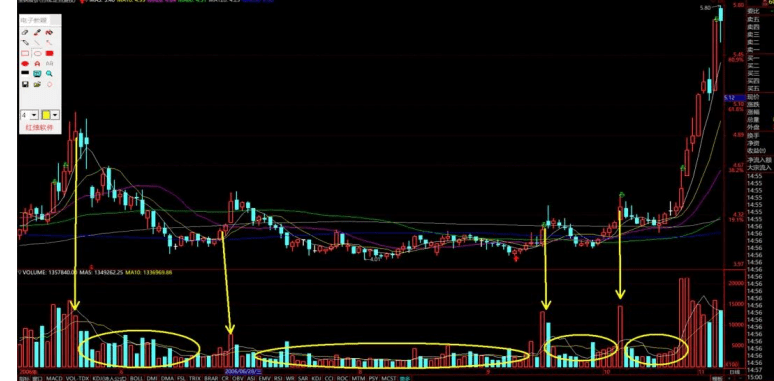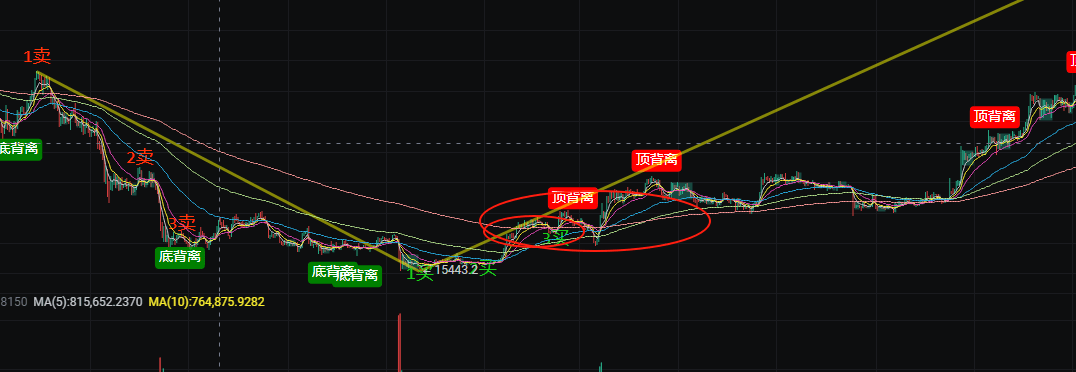Chan theory enlightenment: earning the index yet losing money in the cryptocurrency market? These pieces of advice can help you turn the tables!
Hello to all cryptocurrency investors! I am a KOL focused on sharing blockchain trends and trading strategies.
Although Chan theory originally targeted the stock market, its practical advice is particularly useful in the 2025 cryptocurrency market: after the Bitcoin halving, the entire market index (market value) surges, but many people earn the 'index' and lose their principal. This course uses this ID 'Harassing Uncle' as an example to share the rhythm of the bull market and methods for finding bull coins, helping newcomers avoid pitfalls and optimizing for veterans.
1. Common tragedies in the cryptocurrency market: earning index but losing principal.
Chan theory's seventh lesson directly addresses retail investors' pain points: many earn the index yet lose money, the original story of 'Uncle'—aged, with tens of millions in funds, hesitated to buy options, earning small profits and running away; when Air China dropped, he hesitated for several days before buying. As a result, fluctuations caused disturbances; box-type consolidations won’t bring short differences, afraid to sell during rises, afraid to buy during drops. The main issue is lack of confidence in the bull market and lack of grasp on rhythm. Before May, there was a pre-heating for colored metals; currently, financial index stocks are in the first phase. In 1996, Shenfa developed several times, while others remained stagnant. Missed the rhythm? Follow strong positions during corrections; poor technology? Focus on volume breaking the first-day high of new stocks or annual line corrections for old stocks; the annual line must be watched for upward turning points.
Chan theory criticizes retail investors as floating weeds, rootless and without ideas, bound to be slaughtered. The bull market is phased, with first-line stocks rising first, while others catch up. Philosophically, the market is like a battlefield; confidence + rhythm = survival. Finding bull stocks is simple: annual line starts, earn 50% first.
Acceleration has two types: price-time ratio large, previous 4-6% then 8-10%.
Selling stocks: no emotions, like tossing aside a man; in a bull market, focus on component stocks, the main force battles, don’t follow scattered troops. Fundamentals can be misleading, giving false confidence; retail investors don’t need to research, just understand the influence of human sentiment. Play capitalism, be ruthless and decisive; failures are self-inflicted; uncover the true cause. Making money is like fighting; it’s a life-or-death struggle; the survivors are the bulls.
In the crypto world, this tragedy is even more common. In the first half of 2025, Bitcoin rose from $60,000 to $80,000, doubling the entire market value (earning index), but many held small coins that halved in value. Why? Like the uncle, before the halving he dared not fully invest in options, earning a bit of USDT and running away; when SOL dropped to the bottom, he hesitated to buy. Volatility causes panic; consolidation won’t bring short differences. Root cause: lack of confidence in the bull market (halving narratives) and lack of grasp on rhythm (warming up memes and main rises in Layer 1). In-depth: the cryptocurrency market goes through phases; pre-halving warming up (testing hot spots), currently BTC/ETH in the first phase. Missed the rhythm? Follow strong positions during corrections (like SOL ecosystem); poor technology? Focus on volume breaking ATH for new coins or annual line corrections for old coins; the annual line turning point must be watched. Refer to other KOLs like 'Market Rhythm Master' or 'Crypto Bull'; they discuss rotations, but Chan theory is sharp: retail investors are like floating weeds, bound to be slaughtered; in a bull market, earning index several times over is not for the weak.
2. Bull market rhythm and finding bull coins: simple and reliable methods.
Original text explanation: In the first phase of the bull market, first-line stocks rise first, others do not move until the position is right. Missed? Good technology to follow strong positions during corrections; if not, watch for volume breaking the first-day high of new stocks or annual line corrections for old stocks, with annual line turning points being bullish. Example: Baosteel: breaks the annual line, corrects to 4.17, and starts with increased volume, completing 50%. The chart shows volume breaking and shrinking corrections. Retail investors should not bottom fish or top escape; wait for the trend to clarify. Hold if the 30-day line doesn’t break for the medium term; for short-term differences, increase utilization rate, sell high and buy low. Selling principle: pay attention to slow acceleration when exiting; explosive second waves diverge/huge volume moves. Leave the market if there’s a drop exceeding 5% after a daily rise, at least half of the position. In a bull market, focus on component coins; big funds eat retail funds. Avoid large corrections, leverage corrections for rotation. Fundamentals are misleading; don’t trust them. Making money is a life-or-death struggle; the capable ones are the bulls.

Deeper meaning: the integration of Chan theory and practical Zen, rhythm = capital utilization. The annual line is like a lifeline, the turning point is the G-point. Acceleration = price-time ratio/increased gains. Throw without emotion; the market is ruthless. Self-reflection after failure to uncover the real cause. Making money is like fighting; the survivor is the king.
In the first phase of the 2025 bull market, BTC/ETH rise first, while small coins remain inactive until the position is right. Missed? Follow strong positions during corrections (like ETH ecosystem after a correction). Simply find bulls: focus on volume breaking ATH for new coins (like new Layer 2) or annual line corrections for old coins; the annual line turning point is bullish. Example: Bitcoin: after the halving, breaks the annual line (around $50,000) and corrects, starts with volume, now $80,000, 60% complete. On-chain observation: volume breaking and shrinking corrections. Retail investors in the cryptocurrency market should not bottom fish (blindly buying during a bear market); wait for the trend (like halving confirmation). Hold if the 200-day line doesn’t break for the medium term; for short-term differences: consolidate to sell high and buy low. Selling: pay attention to slow acceleration (like daily rises changing from 4-6% to 8-10%); explosive second waves diverge/huge volume moves. Leave the market if there’s a drop exceeding 5% after a daily rise. In a bull market, emphasize 'component coins' (BTC/ETH/BNB), big whale battles, don’t follow small memes. Avoid large corrections (like halving shakeouts), leverage corrections for rotation (from meme to DeFi). Fundamentals (like white papers) can be misleading; don’t trust them; understand the influence of human sentiment (like halving narratives). In-depth: the cryptocurrency market is ruthless; be heartless; failures are self-inflicted; uncover the true cause. Making money is like fighting; the capable ones are the kings.

3. Cryptocurrency market advice: rhythm + mindset, doubling is not difficult.
Chan theory advice: earn several times the index in a bull market, not for the weak. Just one principle: avoid large corrections, leverage corrections for rotation. Retail investors' technique: find bulls at the annual line. PS: explain the annual line (250-day average), stock example analysis.
Cryptocurrency market adaptation strategy:
Catch the rhythm: warm up with small coins, follow the main rise with the first line (BTC). Missed the callback? Enter strong positions.
Find bull coins: breakout with volume surpassing ATH, new/annual line correction for old ones, annual line turning point is bullish. Look at on-chain volume and price.
Operating principles: enter and exit when the trend is clear. Hold for the medium term at the 200-day line; play short-term consolidations. Accelerate/diverge.
Mindset: no emotions, throw away like tossing a man. Focus on components; large whales eat small retail. Fundamentals can be misleading, don’t trust them.
Risk: self-reflection after failure. In-depth: make several times in a bull market, avoid corrections and rotations.
As a KOL, I see many who earn the index yet lose: fans shift from hesitation and loss to grasping the annual line, doubling in half a year. Chan theory redemption: rhythm confidence, the royal path.




